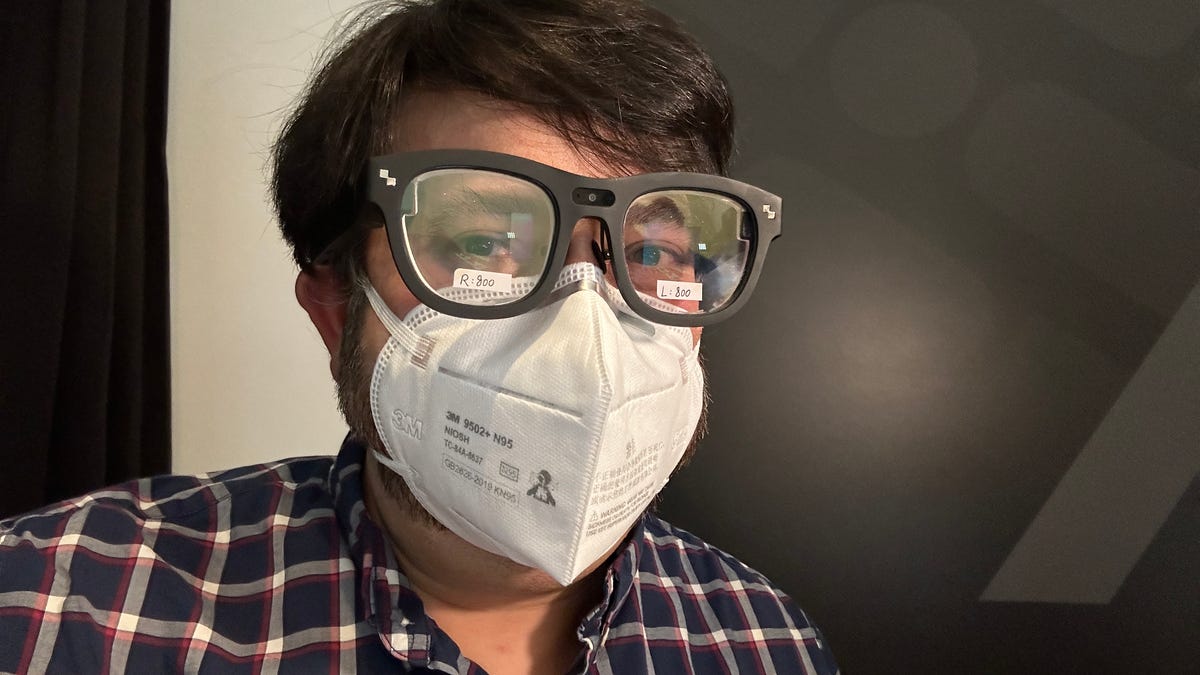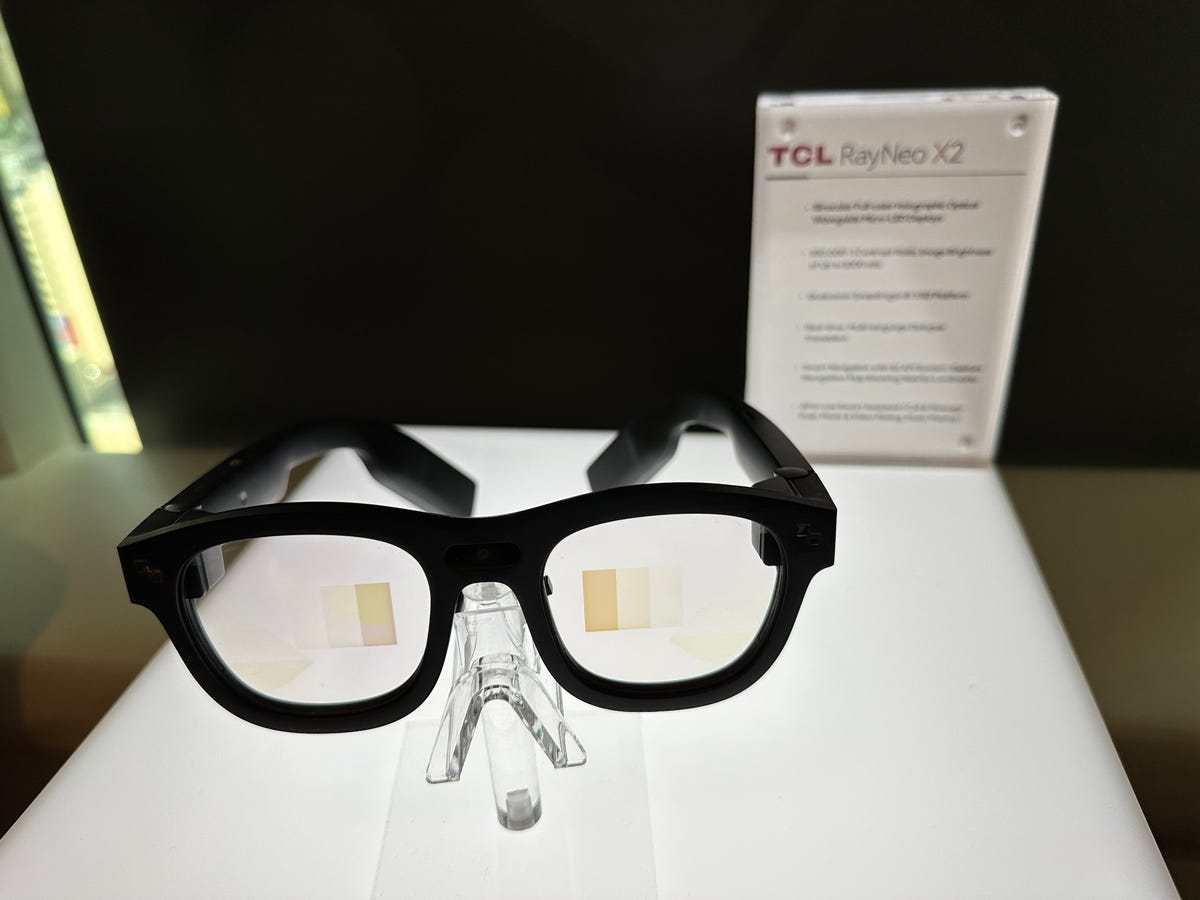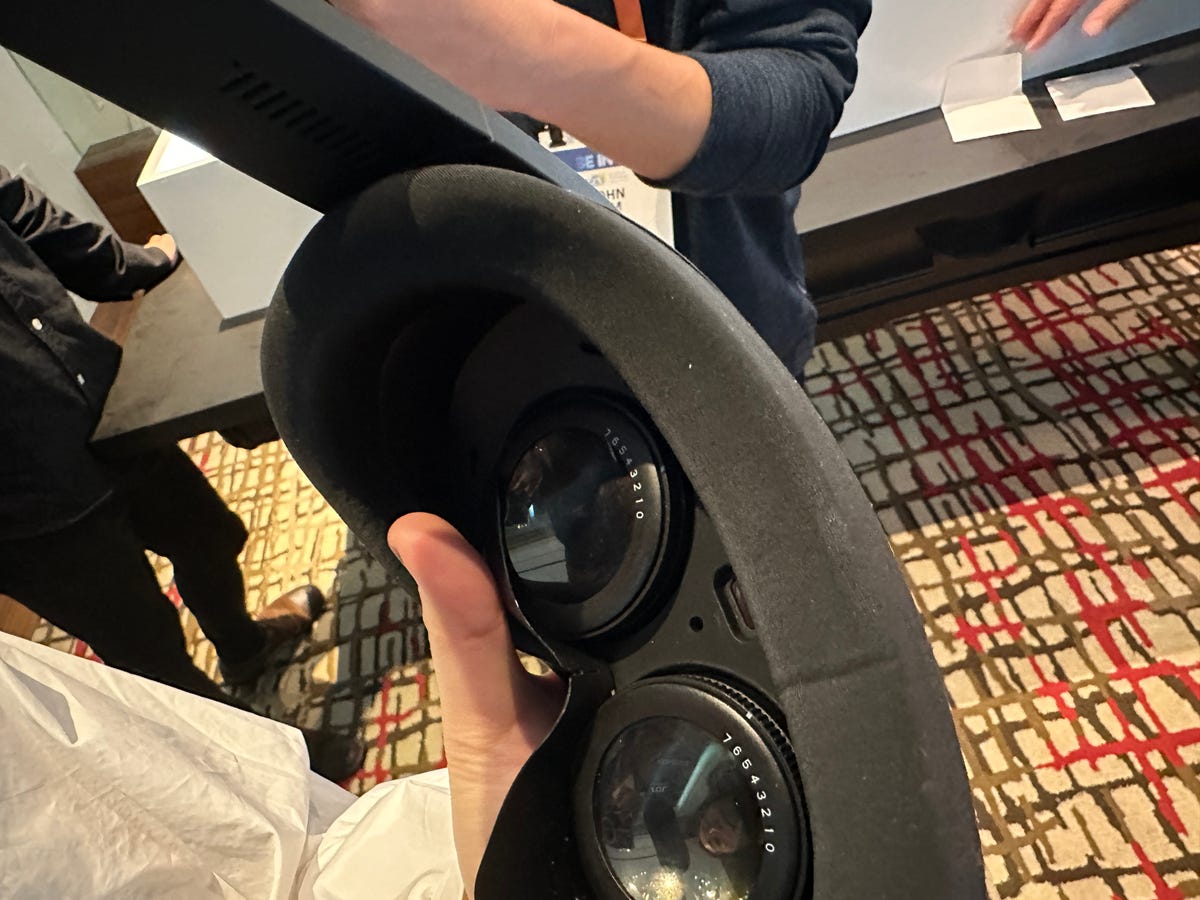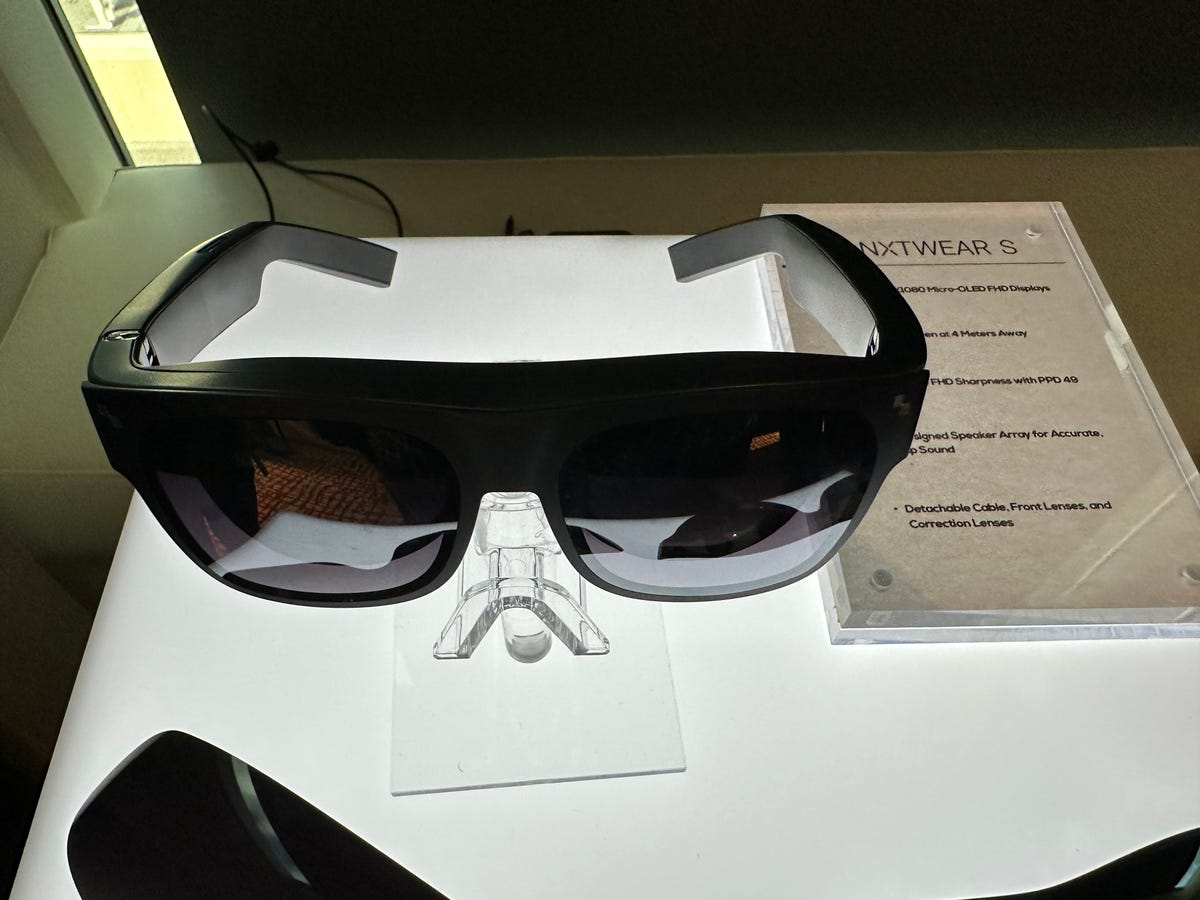TCL’s RayNeo X2 AR Glasses Live-Translate Conversations for Me

Trying on TCL’s RayNeo X2 AR glasses from a hotel suite in Las Vegas.
Scott Stein/CNET
A wave of VR and AR headsets and glasses are expected in 2023, arriving from companies including Apple, Sony, HTC and Meta. The number of future hardware players is growing, though — add TCL to that mix.?
You’ve probably heard of TCL as a TV manufacturer. TCL does a lot more than that, including phones. The Chinese electronics company has already dabbled in several generations of display-enabled glasses. Now, TCL is demonstrating two new prototype VR and AR headsets that show where things could go next: these devices were announced alongside a continually-evolving version of TCL’s already-available NXTWear display glasses I tried a few years ago.
Neither the VR headset nor AR glasses are actual coming-to-market products, but both show clear paths where TCL, a maker of displays, could gain footholds. TCL is already a partner with Qualcomm on AR and VR devices, and both the VR and AR glasses I tried use the several-years-old Snapdragon XR2 that’s in the Meta Quest 2.?
TCL announced its move into AR glasses last January, but the new AR hardware, plus a surprise VR headset, is now actually available to demo in Las Vegas. I gave all three devices a test drive in a hotel suite ahead of this year’s CES.

From a certain angle, these glasses look almost normal. Note the waveguides in the lenses, though, which help project the displays.
Scott Stein/CNET
The RayNeo X2 AR glasses, using built-in waveguides into the lenses that project Micro LED displays that hover in front of both eyes, look borderline normal from certain angles. The still-bulky glasses don’t use Qualcomm’s recently announced AR glasses-optimized AR1 chipset yet, but you could imagine they will. Representatives from TCL in Las Vegas confirmed that’s eventually the plan, which will likely make these glasses even smaller.
The glasses have prescription inserts that are meant to be used instead of wearing your own glasses underneath. TCL has a wide range of inserts for this pair of glasses, including ones that could come close to my -8.2 myopic vision.
I tried a few simple demos with the glasses, which have their own touchpad control on one arm to navigate and tap through apps, but also support hand tracking (which I didn’t get to try). The most impressive is a real-time translation tool that allowed me to understand someone in the room speaking in Chinese to me. However, the live transcription also presents what everyone in earshot is saying, too, including myself. It’s reminiscent of what Google is already working on for its own assistive AR glasses project.
Another demo, showing navigation, shows pop-up directions much like what glasses including Google Glass have done. The glasses can also play music through their arms as levels low enough to not be heard by others, reminiscent of Meta’s Ray-Ban Stories glasses.?

TCL’s VR headset looks unremarkable cosmetically, but does have its own prescription-adjusting dials inside: it’s meant to be worn without glasses.
Scott Stein/CNET
The TCL NXTWear V VR headset, TCL’s concept entry towards making a Quest competitor much like the Pico 4, feels like it still had unpolished tracking and controller movement, but the lightweight design is reminiscent of where headsets are going, and it has color passthrough cameras that could eventually work with mixed reality. It’s definitely more compact than the Quest 2, and has what seems like a vivid display… except, I can’t quite tell with my eye prescription. Much like the compact?HTC Vive Flow VR goggles, this headset is also meant be worn without glasses, and has its own vision-adjusting diopter instead of prescription inserts, but the settings max out at a -7. My nearsightedness is worse. It’s a problem future VR and AR headsets still need to solve.

TCL’s NXTWear S glasses are really just hardware that projects a fixed but very vivid display mirrored from a phone, PC, or game system.
Scott Stein/CNET
TCL also has another more advanced set of NXTWear S display glasses, a portable wearable display that’s an improvement on a pair I tried a few years ago. The new model uses a better Micro-AMOLED display showing off a surprisingly vivid hovering screen of whatever they’re plugged into, with a display resolution that TCL compares to 49 pixels per degree (translation: It’s a limited viewing area, but looks like a full version of your phone display at a retina-resolution-type level of crispness). I connected with a TCL phone over USB-C, trying a new feature that turns the phone into a motion-controlled pointer that casts a line to the floating screen to select buttons and open apps.
Nobody has been able to make true everyday mass-adoption AR glasses work at a large scale yet, although many companies are trying and several already have products available. Qualcomm has already promised that a wave of new AR glasses are coming between 2023 and 2025, and TCL looks to have already shown a hint of what it’s aiming for. If the company’s VR/AR trajectory looks anything like its success path with TVs, it could be a major player for headset displays over time.